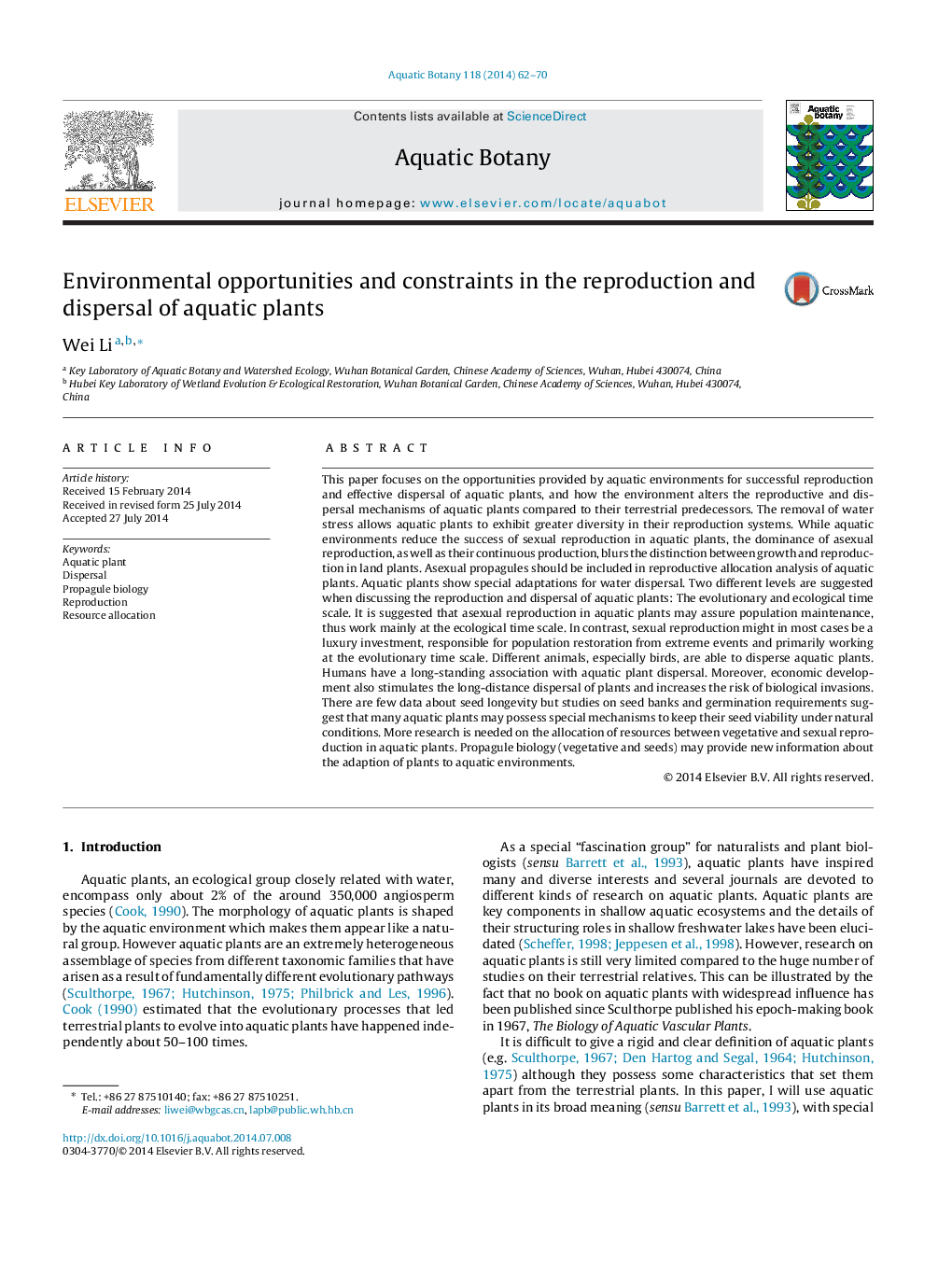| کد مقاله | کد نشریه | سال انتشار | مقاله انگلیسی | نسخه تمام متن |
|---|---|---|---|---|
| 4527822 | 1625824 | 2014 | 9 صفحه PDF | دانلود رایگان |
• Macrophyte reproduction and dispersion were discussed from their adaptability.
• Water provided a different selective environment for macrophytes to adapt.
• Removal of water stress led macrophytes to show various reproduction ways.
• The roles of different dispersal vectors were discussed.
• Several related topics for further researches were suggested.
This paper focuses on the opportunities provided by aquatic environments for successful reproduction and effective dispersal of aquatic plants, and how the environment alters the reproductive and dispersal mechanisms of aquatic plants compared to their terrestrial predecessors. The removal of water stress allows aquatic plants to exhibit greater diversity in their reproduction systems. While aquatic environments reduce the success of sexual reproduction in aquatic plants, the dominance of asexual reproduction, as well as their continuous production, blurs the distinction between growth and reproduction in land plants. Asexual propagules should be included in reproductive allocation analysis of aquatic plants. Aquatic plants show special adaptations for water dispersal. Two different levels are suggested when discussing the reproduction and dispersal of aquatic plants: The evolutionary and ecological time scale. It is suggested that asexual reproduction in aquatic plants may assure population maintenance, thus work mainly at the ecological time scale. In contrast, sexual reproduction might in most cases be a luxury investment, responsible for population restoration from extreme events and primarily working at the evolutionary time scale. Different animals, especially birds, are able to disperse aquatic plants. Humans have a long-standing association with aquatic plant dispersal. Moreover, economic development also stimulates the long-distance dispersal of plants and increases the risk of biological invasions. There are few data about seed longevity but studies on seed banks and germination requirements suggest that many aquatic plants may possess special mechanisms to keep their seed viability under natural conditions. More research is needed on the allocation of resources between vegetative and sexual reproduction in aquatic plants. Propagule biology (vegetative and seeds) may provide new information about the adaption of plants to aquatic environments.
Journal: Aquatic Botany - Volume 118, August 2014, Pages 62–70
